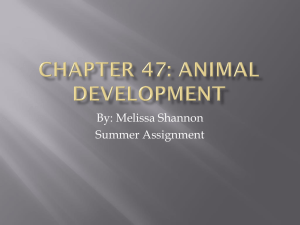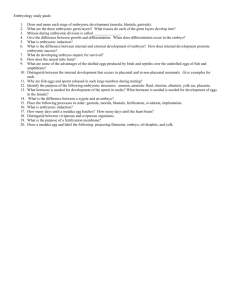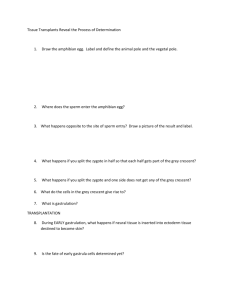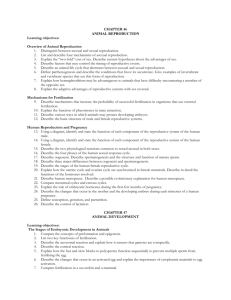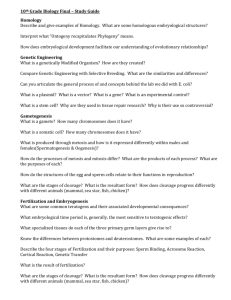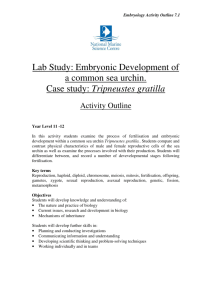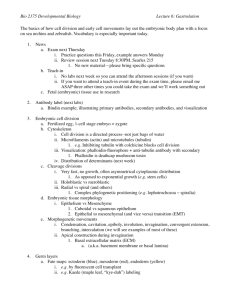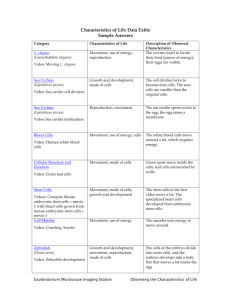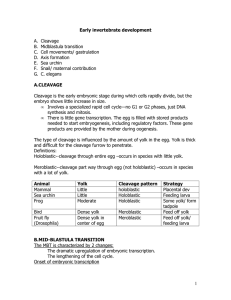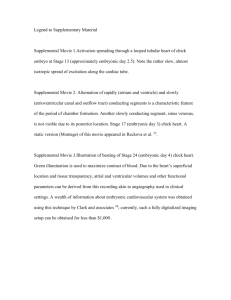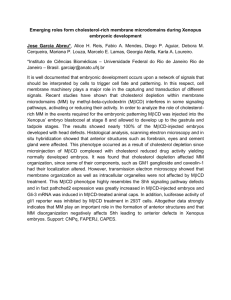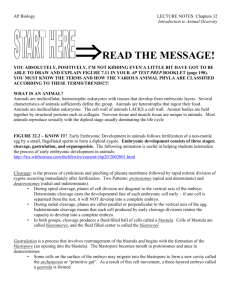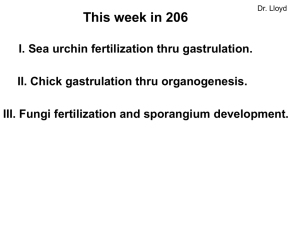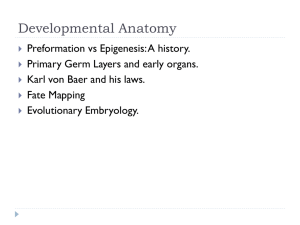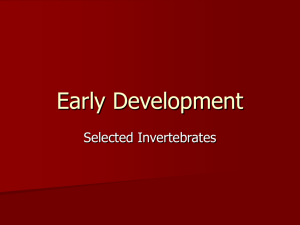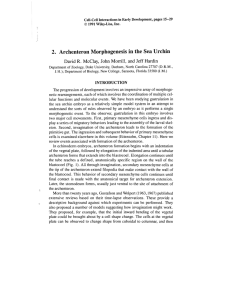AP Biology
advertisement
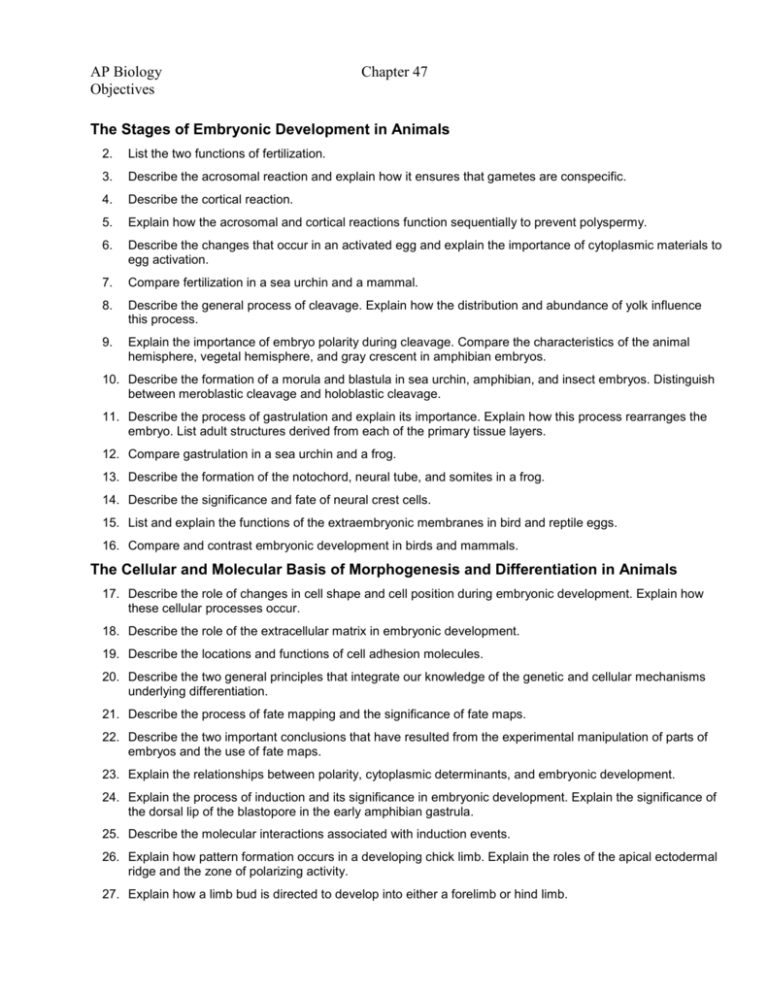
AP Biology Objectives Chapter 47 The Stages of Embryonic Development in Animals 2. List the two functions of fertilization. 3. Describe the acrosomal reaction and explain how it ensures that gametes are conspecific. 4. Describe the cortical reaction. 5. Explain how the acrosomal and cortical reactions function sequentially to prevent polyspermy. 6. Describe the changes that occur in an activated egg and explain the importance of cytoplasmic materials to egg activation. 7. Compare fertilization in a sea urchin and a mammal. 8. Describe the general process of cleavage. Explain how the distribution and abundance of yolk influence this process. 9. Explain the importance of embryo polarity during cleavage. Compare the characteristics of the animal hemisphere, vegetal hemisphere, and gray crescent in amphibian embryos. 10. Describe the formation of a morula and blastula in sea urchin, amphibian, and insect embryos. Distinguish between meroblastic cleavage and holoblastic cleavage. 11. Describe the process of gastrulation and explain its importance. Explain how this process rearranges the embryo. List adult structures derived from each of the primary tissue layers. 12. Compare gastrulation in a sea urchin and a frog. 13. Describe the formation of the notochord, neural tube, and somites in a frog. 14. Describe the significance and fate of neural crest cells. 15. List and explain the functions of the extraembryonic membranes in bird and reptile eggs. 16. Compare and contrast embryonic development in birds and mammals. The Cellular and Molecular Basis of Morphogenesis and Differentiation in Animals 17. Describe the role of changes in cell shape and cell position during embryonic development. Explain how these cellular processes occur. 18. Describe the role of the extracellular matrix in embryonic development. 19. Describe the locations and functions of cell adhesion molecules. 20. Describe the two general principles that integrate our knowledge of the genetic and cellular mechanisms underlying differentiation. 21. Describe the process of fate mapping and the significance of fate maps. 22. Describe the two important conclusions that have resulted from the experimental manipulation of parts of embryos and the use of fate maps. 23. Explain the relationships between polarity, cytoplasmic determinants, and embryonic development. 24. Explain the process of induction and its significance in embryonic development. Explain the significance of the dorsal lip of the blastopore in the early amphibian gastrula. 25. Describe the molecular interactions associated with induction events. 26. Explain how pattern formation occurs in a developing chick limb. Explain the roles of the apical ectodermal ridge and the zone of polarizing activity. 27. Explain how a limb bud is directed to develop into either a forelimb or hind limb.
